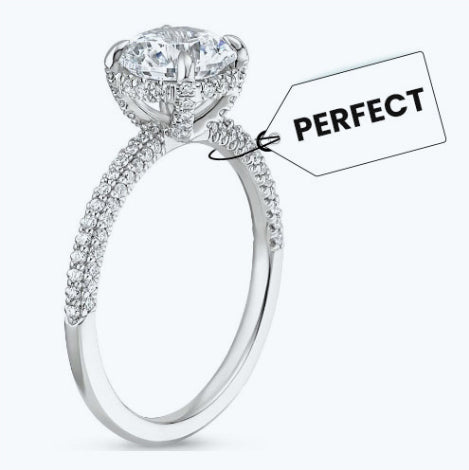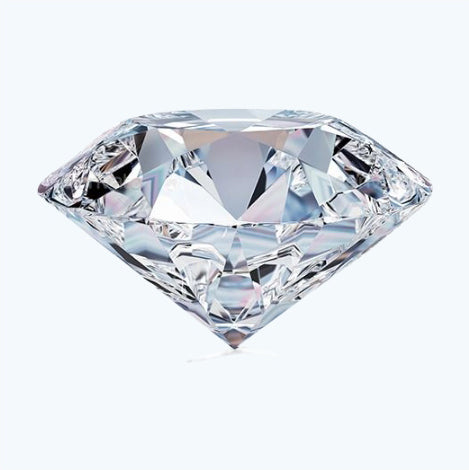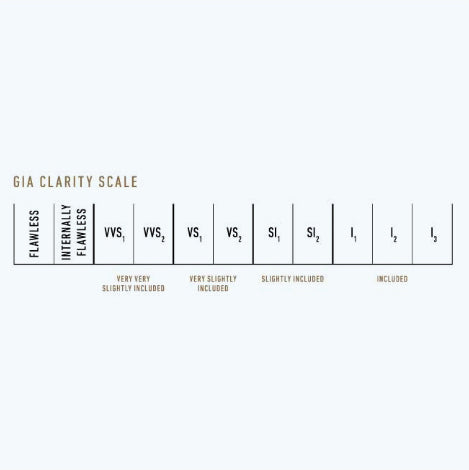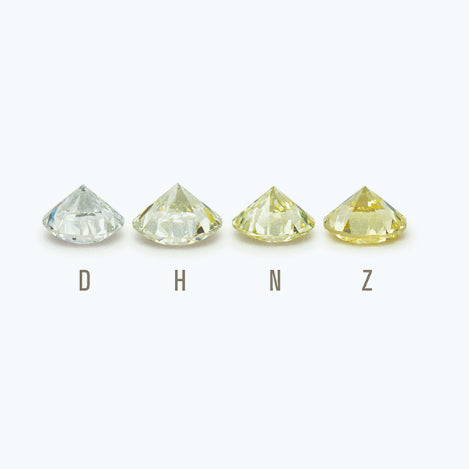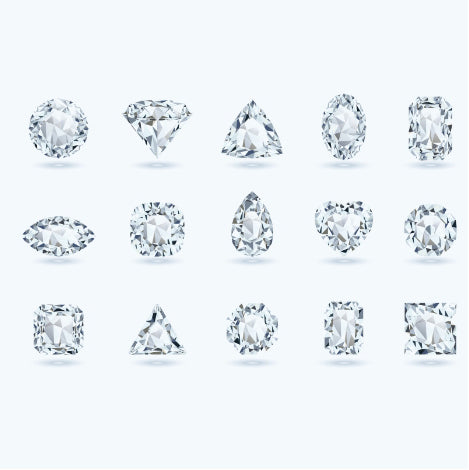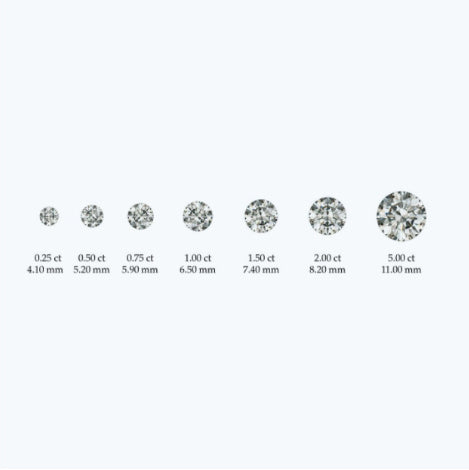October 22, 2022
Pashko Juncaj
Top 10 Diamond Industry Secrets to Know when Buying a Diamond
Secret #1:
Stay within a comfortable budget
You know how people usually have a mindset of spending 4 months' worth salary on a ring? That's old-school stuff. You don't have to do that anymore, as we have beautiful engagement rings for every budget and style.
- Our diamond experts, who have over 30 years of experience in the jewelry industry, do not work on commission.
- Every product we have, regardless of its price, is made with the utmost attention to detail and goes through the Angelucci Jewelry rigorous quality control process.
Secret #2:
Know the 4C's: Color, Clarity, Carat and Cut
Knowing the 4C's of diamond quality is the key to navigating the often-confusing world of diamonds. We are here to guide you, to give you the right information- not to pressure you! If you have any questions, contact us or set up a schedule fora free diamond consultation anytime via Zoom or phone call. Well be right there to assist you all the way. We have diamond experts who will walk you through the whole thing start to finish and get you the most bang for your buck!
- The 4Cs are the starting point for value for diamonds
- Keep an open mind-sometimes a K color diamond can knock your socks off
- Consider Fire, Life and Brilliance when buying a diamond which means really how shiny and sparkly a stone is. The 4Cs are just the starting point! Consult a Diamond Expert at Angelucci Jewelry to guide you through this. You're not alone!
Secret #3:
Pay close attention to the way the Diamond is Cut
Arguably the most crucial variable, one should really pay attention to cut. It's not shape I'm referring to-it is Cut. The manner in which a diamond has been cut can make a huge impact on how much it shines, or doesn't shine. A diamond's cut is something any buyer should pay very close attention to. Regardless of the shape, a diamond's cut will always determine its sparkle and brilliance.
- Stick with these cut grades: Good, Very Good, and Ideal cuts; they cost bit more than poorly cut stones but they are the best options for anyone looking to buy a diamond.
- Cut Grade only available on round brilliant stones. However, the way any diamond shape stone has been cut is very important.
- Ideal cut is the best if you're going for the maximum amount of sparkle.
- A cut that is too shallow or too deep will make even a flawless diamond appear dull.
- According to GIA, The GIA Diamond Cut Grading System for standard round brilliants in the D-to-Z color range is based on the assessment of seven components. The first three — brightness (the total light reflected from a diamond), fire (the dispersion of light into the colors of the spectrum), and scintillation (the pattern of light and dark areas and the flashes of light, or sparkle, when a diamond is moved) — are appearance-based aspects. The remaining four — weight ratio, durability, polish, and symmetry — are related to a diamond's design and craftsmanship.
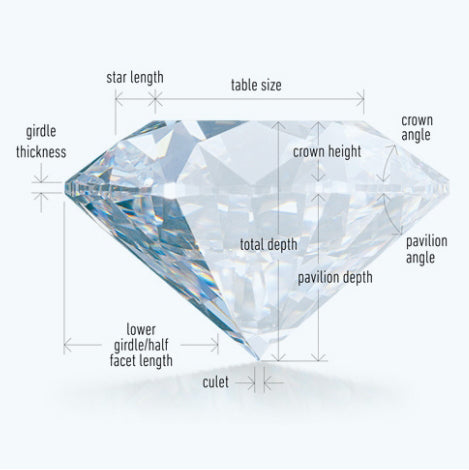
Secret #4:
The Diamond Chooses You
Decide which element of the 4C's is most important: Usually Color or Clarity...
- A well-cut diamond will refract and reflect light very well, allowing it to create a sparkle that you can see across a far distance.
- Color is a very important factor in determining a diamond's quality according to the 4C's, and you stand back a few feet from the ring in order to really appreciate a diamond's natural color. You'll notice the highest clarity grades from a very close
- The Diamond Chooses you. Go with your gut instinct. It's usually right!
Secret #5:
Don't Overemphasize Diamond Size and Carat weight
As you may very well know, in the world of diamonds, bigger is not always better. A common misconception about the carat is that it about the size, when in actuality, it's about the weight of the diamond. When you're on a budget, think of it this way - would you rather go with a stone of a specific carat weight mark, or one with a larger face-up size?
- The higher the carat weight, the bigger the price tag, especially after certain carat weight markers like 1 carat or 2 carats.
- Is size important to you? Maybe/Maybe not.
- Since a carat is only a fifth of a gram, a slight difference in weight between two stone will not be very evident in their appearance, especially with diamonds cut into certain shapes that are designed to make them look bigger than they actually are.
- The only noticeable difference between two diamonds of slightly differing carat weights will be on their price tags.
- Since carat weight is relative to finger size, setting size, and diamond shape, a smaller carat weight can be the better choice sometimes.

Secret #6:
Get Clear about Clarity
Diamonds have a massive clarity range: from Included to Flawless, with a wide price margin between the two extremes. In fact, most diamonds have flaws that can only be seen when you magnify them by 10x, making even slightly included diamonds appear eye-clean.
- Diamonds have imperfections called clarity characteristics:
- Diamonds can have either external flaws (blemishes) and/or internal flaws (inclusions).
- To maximize the clarity for your budget, we suggest starting your search around VS2/ Sl1/Sl2 grades. Every stone is different and some Sl1 stones look amazing. Figure out what is important to you and what is a reasonable budget to spend.
- Depending on the diamond shape, clarity characteristics are more or less obvious.
Secret #7:
Near-Colorless(G/H/I) vs Colorless (D/E/F) Color
Since it has been established in the 4C's of diamond quality that colorless diamonds are rarer and therefore more expensive than those that are slightly colored, it would be better for someone with a tight budget to go with a near-colorless stone rather than an absolutely colorless one.
- Diamonds are typically graded from D (colorless) to Z (brownish or yellowish).
- Going with diamonds graded from G to H (near-colorless) is a great idea to cut down on the budget and still get great value and quality for your money.
- The color of the band's metal will also affect the way your diamond's color is perceived, so keep this in mind. A yellow gold ring makes the diamond look more yellow. A white gold ring makes the diamond look whiter, etc.
Secret #8:
Consider Shapes Other than the Round Brilliant
It is an established fact that the round brilliant diamonds are the most popular among all the diamond shapes, but you really shouldn't just dismiss all other shapes as irrelevant or bad choices to pick. Any diamond shape that is not round is referred to as a 'fancy shape', and these are generally less expensive than round brilliant ones. Some fancy shapes also tend to make diamonds appear larger than their round equivalents in carat weight would, so that's another plus point. In the wholesale diamond world, there are essentially two diamond price lists: round brilliant and fancy shapes.
- There are several fancy diamond shapes including: Princess, Emerald, Asscher, Cushion, Marquise, Oval, Radiant, Pear, and Heart.
Secret #9:
Stay away from the "Magic Sizes"
Diamond prices increase dramatically after hitting the carat and half-carat marks, but their visual appearance is slight. In other words, if you by a 0.90 carat diamond vs a 1.02 carat stone, you will not even notice the size difference. But the 1.02 carat stone will be each more expensive because that is how the world diamond market operates. Purchasing diamonds just a little below those price-jump marks is a great, smart way to maximize the quality you get for your budget!
- The face-up sizes (what you see with naked eye) between a 1.9-ct diamond and a 2-ct diamond is very slight, but their prices will have a huge difference between them.
- Save tons of money

Secret #10:
Make Sure the Diamond is 100% Conflict-Free
Buying an engagement ring is a large purchase. Its not exactly the same as a nice dinner! You also want to make sure that it is 100% conflict-free, and the only way to really be certain of it is to check the paperwork and make sure it is a lab-created diamond. Contrary to any BS or half-Truths spewed by many jewelers, Lab-Created Diamonds are DIAMONDS! The old world of De Beers and all the Eco-System down to the wholesalers have fought against lab-created diamonds because they have to sell their existing inventory. Disruption is always good for the consumer. And if I truly want to serve my clients best, shouldn't I try and save them money where I know they can.
- We only sell certified lab-created diamonds
- Lab-Created Diamonds are compositionally and in every other way exactly the same as mined diamonds
- It takes 2,000 tons of dirt to uncover a 1 carat diamond for a typical diamond mine
- GE (General Electric) has been creating lab-diamonds since the 1970's
- Lab-created Diamonds area lot more affordable than mined diamonds. Period!
- Even though DeBeers and The Kimberly Process curbed most of the sale of blood diamonds, there is no way to ensure a diamond is ever conflict-free unless it is a lab-created diamond.

